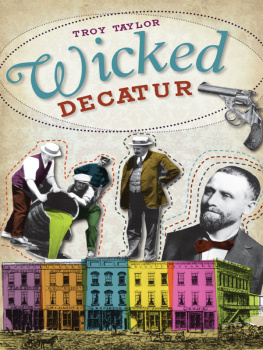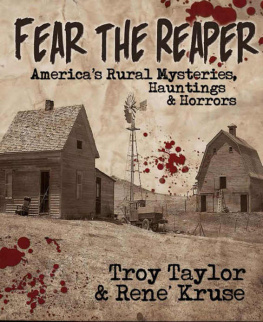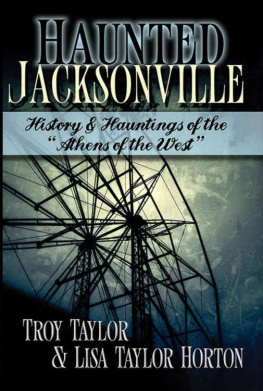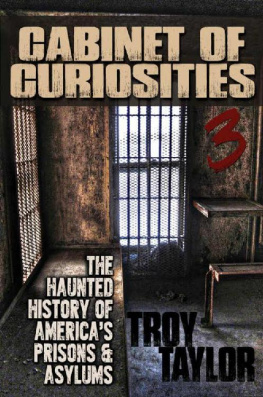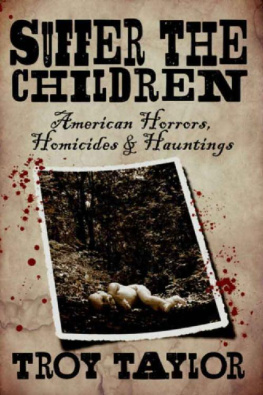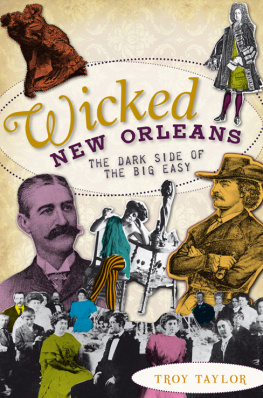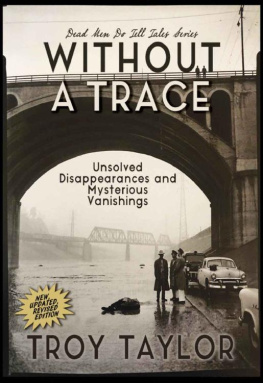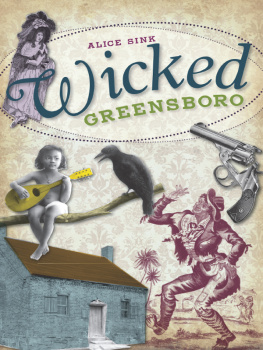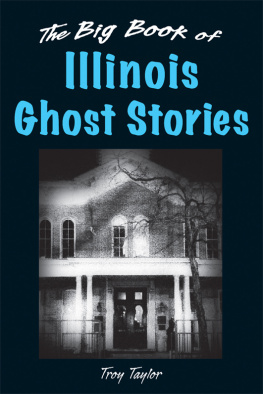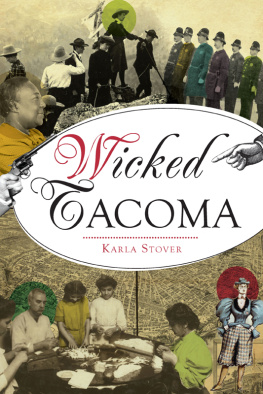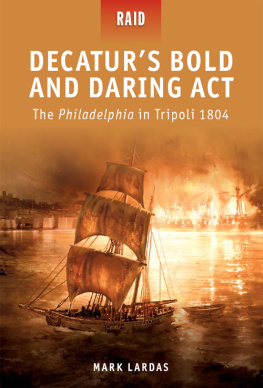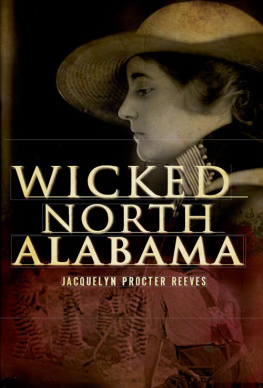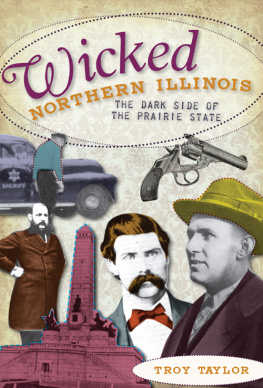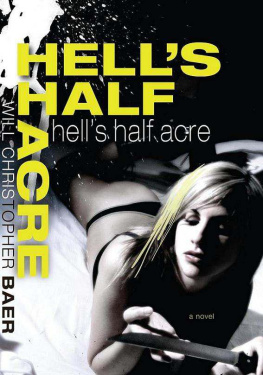

The Transfer House in Decaturs Lincoln Square, 1906.

Published by The History Press
Charleston, SC 29403
www.historypress.net
Copyright 2011 by Troy Taylor
All rights reserved
First published 2011
e-book edition 2013
Manufactured in the United States
ISBN 978.1.62584.116.2
Library of Congress Cataloging-in-Publication Data
Taylor, Troy.
Wicked Decatur / Troy Taylor.
p. cm.
Includes bibliographical references.
print edition ISBN 978-1-60949-160-4
1. Crime--Illinois--Decatur--History. 2. Murder--Illinois--Decatur--History. 3. Corruption--Illinois--Decatur--History. 4. Decatur (Ill.)--History. 5. Decatur (Ill.)--Social conditions. 6. Decatur (Ill.)--Biography. I. Title.
HV6795.D38T39 2011
364.109773582--dc22
2011004525
Notice: The information in this book is true and complete to the best of our knowledge. It is offered without guarantee on the part of the author or The History Press. The author and The History Press disclaim all liability in connection with the use of this book.
All rights reserved. No part of this book may be reproduced or transmitted in any form whatsoever without prior written permission from the publisher except in the case of brief quotations embodied in critical articles and reviews.
We have it direct from the officers that the city is infested with large numbers of crooks, and we deem it wise that our citizens should be warned.
The members of the fraternity that is now making life so hazardous are said to be the smoothest class of criminal lot. They are well dressed and from appearance would be the last of a class of men to be looked upon with suspicion. Every day, several of them come under the notice of the police.
To bear out our remarks, we need only to post the astonishing number of hold-ups and other forms of robberies that have occurred in the city of late.
From what has occurred of late, it is very evident that these bold sons of Barabbas are having their way in this mans town.
Editor of the Decatur Bulletin-Sentinel, December 28, 1895
CONTENTS
ACKNOWLEDGEMENTS
I have many people to thank in Decatur for all the ways they have both helped and hindered me over the years as I have worked to chronicle the darker side of local history, from the crime era to the ghosts that haunted the city. While I cant list all of them here, I dont want to forget Skip and Sue Huston, Larry and Cheryl Haubner, Charley Barding, Haven Taylor, Tom and Cindy ODear, John Winterbauer, Adam White and others too numerous to list. Id also like to thank my editor at The History Press, Ben Gibson, for continuing to put up with my oddities, and the readers who have tolerated one more book about Decatur. I promise this is the last oneI think.
CARVED OUT OF THE PRAIRIE
Decaturs Early Years
In 1854, Colonel Dan Conklin built a whiskey distillery, racetrack and whorehouse on the Illinois prairie, not far from Decatur. This earned the area the first of its unflattering nicknames: Hells Half Acre. Vice, and plenty of it, kept Conklins establishment in operation for many years. Later, as is often the case with the criminal element, his descendants turned their attention to politics, and a Conklin was elected mayor in 1895, ushering in an era of corruption unlike anything the city had known before. This Conklin ran with only one idea in mind: bringing back the gambling that had been banned in the city a few years before. His campaign was heavily funded by local gamblers, and he easily won the election. Although gambling, along with liquor and prostitution, came and went as legal pursuits in Decatur for the next several decades, Conklins short term in office truly brought about the reputation that has plagued Decatur for more than a century.
Hells Half Acre may have been the regions first infamous nickname, but it would not be the last. By the 1910s and 1920s, the town of Decatur was referred to as the Second Most Corrupt City in Illinois, gaining notoriety as a place where murder, bootlegging, prostitution, kidnapping, gambling and political corruption were common. It was during this time that my great-grandfather became a member of the Decatur Police Department, creating a connection between my family and crime in Decatur that still endures today.
Decatur started out as barely an idea on the Illinois frontier, a rough settlement that would likely never last. The first home built near the future town was a log cabin erected in 1820 by William Downing, a fur trapper and honey gatherer. Downing and his wife came from near Vandalia and remained until just 1824. His wife was afraid of the Indians in the area, so Downing sold the cabin to the John Ward family and took his wife back to civilization.
The Wards, a large Irish family, included Mary Ward and her seventeen children. Her husband, John Ward Sr., had died in Kentucky a few months before they came to Illinois. Marys oldest son, also named John, died in 1831, but not before playing a prominent role in the founding of Decatur.
Leonard Stevens has been called the first permanent settler of Macon County, where Decatur is located, and he arrived in 1821 or 1822 with part of his family. They settled three miles north of present-day downtown Decatur on what is now called Stevens Creek. Other settlers soon arrived and began building homes near the Stevens settlement. Most of them were from eastern states like New York, Pennsylvania and Ohio, but the most notable exceptions were the Hanks brothers, John, William and Charles, who came from Kentucky and were cousins of Nancy Hanks Lincoln, mother of Abraham Lincoln.
As the Stevens settlement was growing, another settlement was building up near the Sangamon River, where the Ward family was living. These settlers came from the south, places like Tennessee, Kentucky and the Carolinas.
The two settlements thrived for several years, but then rivalry and dissension developed between them. The move to petition the Illinois legislature for the formation of a new county was handled by sending three men from the Ward settlement to Vandalia, at that time the state capital, to get authorization. The men succeeded in January 1829, and public meetings were held to select a site for the county seat of the new Macon County. At the meeting, several fistfights broke out between men from the Ward and Stevens settlements, and one man from the Stevens settlement was beaten so badly that he later died.
A site was selected north of the river, and Benjamin Austin, who had been selected as county surveyor, and his brother, William, platted out the village of Decatur. It was named after the naval hero Stephen Decatur, who was noted for his bravery during the wars with the Barbary pirates in the early 1800s. By the spring of 1834, Decatur boasted about eleven buildings, including some homes, two stores, a courthouse, a couple of taverns and a jail. The town began to attract new arrivals and new businesses, including a small store that was started by a Springfield firm called Bell & Tinsley. The firm sent a stock of goods and a young man name Hawley to act as a clerk. He soon tired of living on the frontier and returned to Springfield, which was far from a big city at the timebut it was better than Decatur, he said. The shop that he opened survived and became Decaturs first real mercantile store and post office. Mail was a luxury back then, and the first postmaster, William Cantrill, had little to do. He later became a county treasurer and a member of the state legislature. Cantrell Street (which was misspelled) on the citys East Side was named in his honor.
Next page
